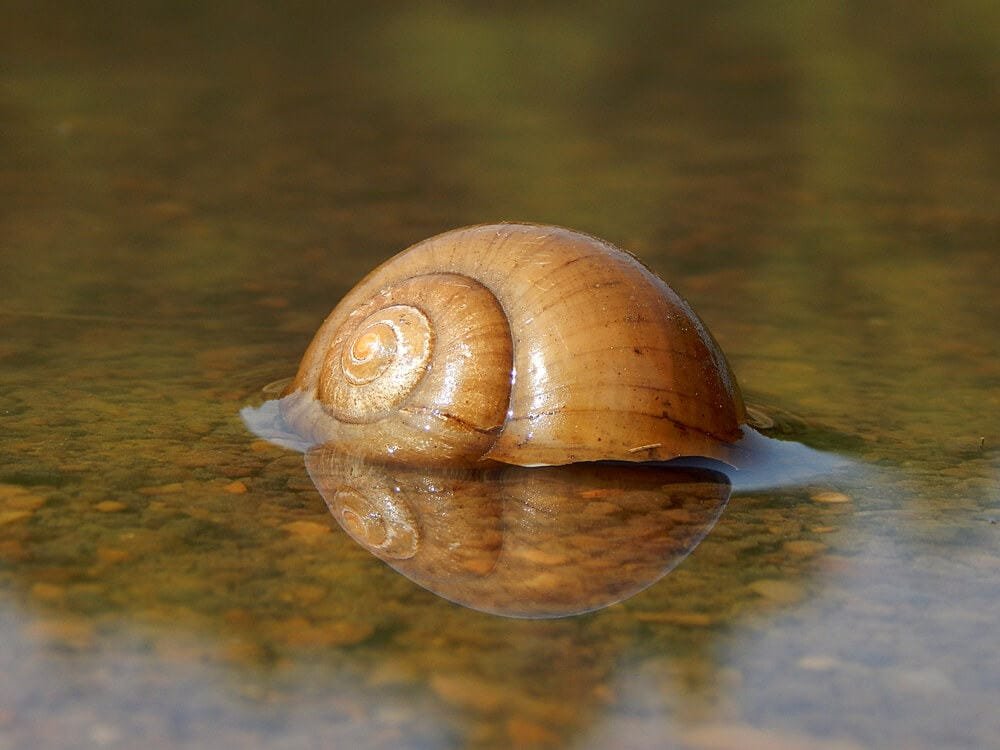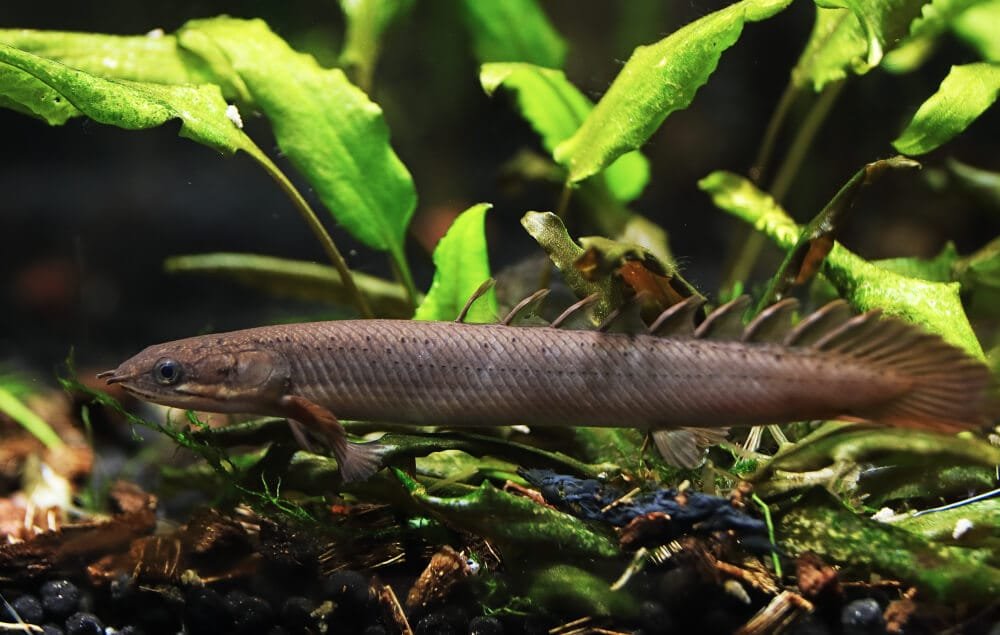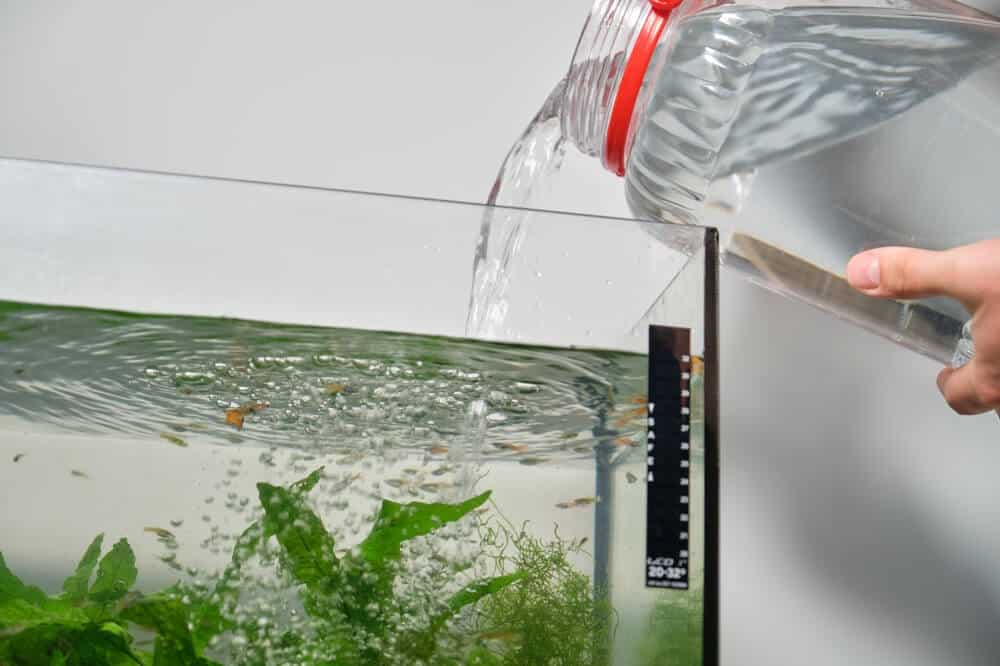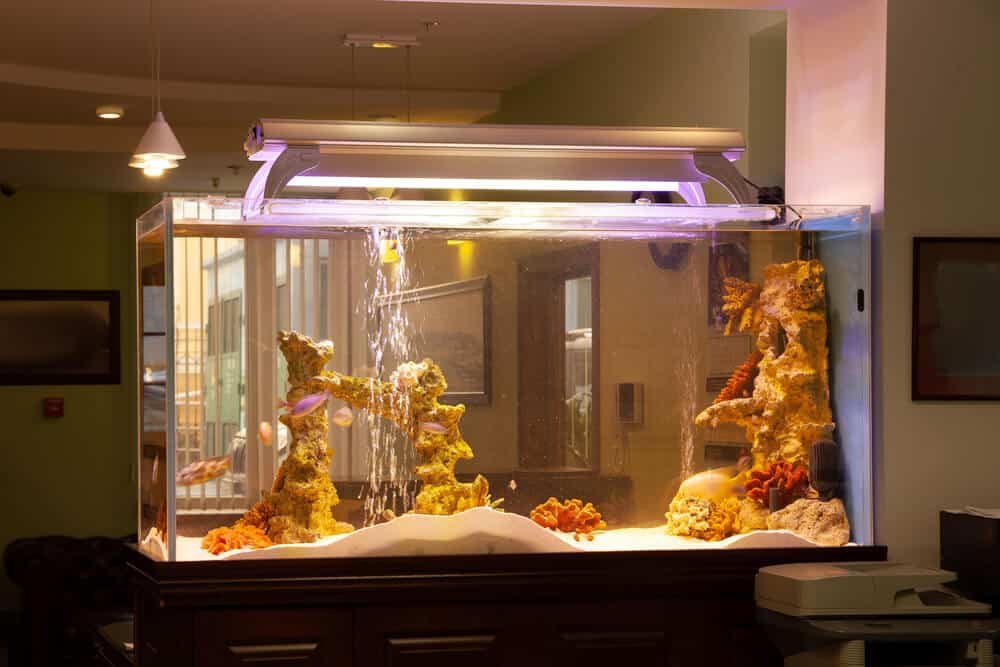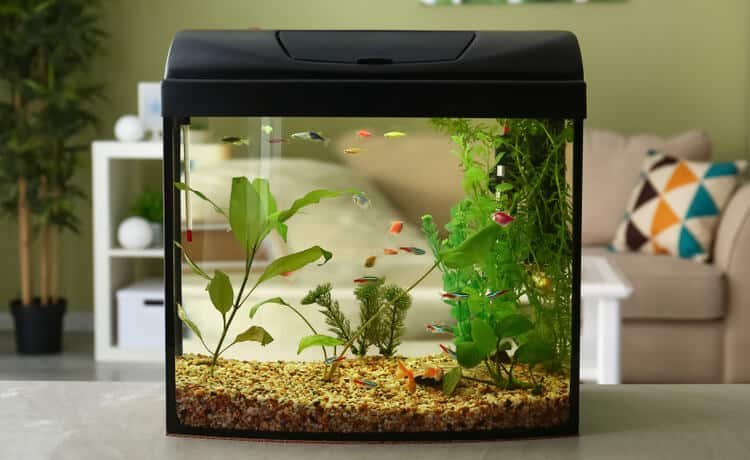The question in the title has come across multiple current and aspiring aquarium owners. Mixing salt water in the tank is essential to caring for aquatic creatures.
But, if you have snails, will it still be safe to use such a method to keep your aquarium well-taken care of?
This article will cover many questions about these concerns and provide necessary information to help aquarium owners better understand the use and safety of aquarium salt.
Aquarium Salt
So, is aquarium salt safe for your aquarium snails or not?
Many aquarium owners have raised concerns about using aquarium salt and its impact.
Some have shared that snails in their aquariums died after they added aquarium salt to their tanks. Some also said their snails seemed fine after adding aquarium salt to their tank.
So, what could have happened? Let’s dive deeper and discover aquarium salt’s properties and proper usage.
What Is Aquarium Salt Made Of?
Aquarium salt comprises sodium chloride, the same components as everyday salt: ordinary salt, table salt, or rock salt.
However, what these salts have in common is that they do not have trace minerals or elements, making them safe to use as aquarium salt.
Unlike sea salt, which contains trace minerals and other properties that make the water’s pH levels high, which is terrible for aquatic creatures.
Uses
The use of salt for an aquarium varies depending on the aquatic creature one raises.
Depending on the type you want to keep and the biotype you are creating, it is essential to have water as close as possible to the aquatic creatures’ natural habitat.
Different Types Of Salt And Fish
There are three different types of fish:
● freshwater
● brackish
● saltwater
But what are their differences, and how is learning each type relevant to understanding whether aquarium salt is safe for snails?
Well, understanding the type of marine life you are raising and its natural habitat will greatly contribute to the type of salt you will be using moving forward.
Which One Should You be Using?
It’s pretty simple—Aquarium salt for freshwater and Marine salt for saltwater and brackish aquatic creatures.
The difference is in the properties of each type of salt. Aquarium salt is simply sodium chloride and does not have trace minerals.
Marine salt on the other hand has trace minerals and elements that make a tank water’s pH level relatively high.
How Does This Work?
Over the years, humans have recreated again and again habitats for marine life to thrive away from their natural homes.
The use of salt is a big factor in this situation to help maintain water conditions to be as close to the natural habitat as possible.
The use of aquarium salt for a freshwater tank has its advantages such as in treating illnesses in certain types of fish.
Some Advantages to Note Are:
● gives stress relief to fish and aquatic plants;
● as mentioned, it treats illnesses like ich and nitrite poisoning;
● helps reduces nitrite absorption; and,
● promotes the formation of slime coats that your snail needs to stay hydrated.
Types Of Aquarium Snails
There are many different kinds and types of snails in the world, but only a few are popularly kept in aquariums.
We have listed a few that are commonly kept in a fish tank:
● Mystery Snails
● Nerite Snails
● Pond Snails
● Ramshorn Snails
Although these are snails that we will discuss, research about the inhabitants of your aquarium and its natural habitat is highly recommended.

Effects Of Aquarium Salt On Snails
Aquarium salt is essential when keeping an aquarium, but, should you use it every single day?
The reason why your snail becomes dehydrated or even may die is great because too much salt in high frequency was placed in the tank.
So, how much should you put in and how often should you salt your water?
Concentration of Salt
Salt in food is delicious, but too much of it can dehydrate a person.
Imagine a snail, which relies heavily on the slime it excretes, being in a heavily salted tank. Now that’s something I would never want to imagine.
The recommended amount of aquarium salt per how many gallons is: 1 tablespoon per 10 gallons of water. This is the minimal dosage of aquarium salt.
Never directly add aquarium salt to your tank!
If you want a fresh and healthy tank but have never added salt to your snails, you can add it in two portions.
The first portion is one tablespoon per 20 gallons of water, so as not to shock your snails. After a few days, check your tank to see if the snails are healthy.
Decide by then if you should continue adding diluted aquarium salt.
It is said, “Don’t put salt in the aquarium; instead, take some water and make a solution outside the tank.”
Frequency of Adding Salt
A salt solution is best added to your tank in these types of events:
● after cleaning your tank;
● after changing the water in the tank; and,
● when a disease breaks out within the tank.
Outside of the events mentioned above, adding salt to your aquarium is not recommended.
Body Size of the Snails
Snails come in many different shapes and sizes. Depending on the maturity or age of the snail as well, you can consider which one has a higher chance of surviving a salted tank, a baby snail or a matured snail.
The answer is that the baby snail may not be keen on being in a salted tank since the baby snail’s body might not be developed enough to withstand the salted water.
Can Aquarium Salt Kill:
Mystery Snails
These are the types of snails that are commonly purchased and placed in freshwater aquariums. These snails are very peaceful and will make your tank look even more beautiful.
These snails also help keep your tanks clean. However, these types of snails do not like being in a salted aquarium. Although, if the salt solution or proportion is low, they may have a chance of surviving.
Nerite Snails
Nerite snails are known to help maintain your tank’s cleanliness by eating and preventing the build-up of algae.
Like the mystery snails, these too are very peaceful creatures.
What makes these snails even better is that they can actually survive full saline water better than other freshwater snail types. Nerites are often seen in brackish or salty waters.
Pond Snails
Pond snails on the other hand are not very tolerable to salty aquariums since they belong to freshwater bodies.
Ramshorn Snails
A ramshorn snail is very attractive and pleasing to look at. A downside to these creatures is they breed profusely, and before you know it, they multiply inside your tank.
But, even so, these snails can survive brackish waters. So, increasing the solution of salt in your tank will not affect these snails as much.
Is There an Alternative to Aquarium Salt?
Yes, there is an alternative. Choose non-iodized salt and should in under no circumstances contain any type of additive.
Rock salt and Kosher salt are the fastest over-the-counter salt that anyone can buy at their local grocery.
Recommendations
If adding salt is necessary, even more than the dose your snail can tolerate, consider transferring your snails temporarily to a different tank to help these tiny aquatic creatures survive until it is safe for them to return to their tank.
